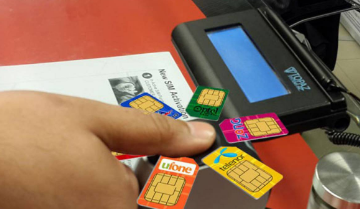Sim Registration

In the ever-evolving landscape of telecommunications, SIM registration stands as a pivotal point of discussion and action. This process, often overlooked by many, holds the key to not only safeguarding user privacy but also to upholding national security measures. The implications of adhering to or neglecting SIM registration guidelines extend far beyond mere regulatory compliance, prompting us to consider the broader impact on individual freedoms, data security, and the integrity of mobile networks. A closer examination of the intricacies involved in SIM registration reveals a complex web of interests at play, inviting us to explore the multifaceted nature of this seemingly mundane yet profoundly significant procedure.
Why SIM Registration Matters
The importance of SIM registration lies in its critical role in enhancing national security and preventing fraudulent activities within the telecommunications sector.
By requiring data verification during registration, privacy protection is increased, and the risk of identity theft is reduced.
Additionally, this process aids in crime prevention by ensuring that individuals using mobile services are traceable, contributing to a safer digital environment for all citizens.
Benefits of SIM Registration
Incorporating SIM registration into telecommunications systems offers a range of tangible benefits for both service providers and consumers alike. Privacy protection and identity verification are strengthened, enhancing security measures.
Moreover, fraud prevention mechanisms are significantly bolstered, ensuring a safer and more secure mobile network environment. These benefits provide users with greater peace of mind knowing that their personal information is safeguarded and their identities are verified.
Role of Governments in SIM Registration
Governments play a crucial role in overseeing and regulating the implementation of SIM registration processes within the telecommunications industry. Government oversight ensures compliance with privacy concerns and helps prevent unauthorized SIM card usage.
Read more : Sim Regi
Steps to Register Your SIM
When registering your SIM card, it is crucial to have the required documents readily available to comply with regulatory requirements.
Additionally, individuals need to decide between completing the registration process online or in-person, each method having its own set of advantages and procedures.
Understanding these steps is essential to ensure a smooth and successful SIM registration process.
Required Documents for Registration
To register your SIM card, you will need to provide specific identification documents as mandated by regulatory guidelines. Required verification includes a government-issued ID card, passport, or driver’s license.
These identification proofs are necessary to ensure the accurate and legal registration of your SIM card. Adhering to these requirements helps maintain security and prevents misuse of mobile services, protecting both consumers and the telecommunications industry.
Online Vs. In-Person Registration
Comparing the efficiency and security protocols between online and in-person registration processes for SIM cards reveals distinct advantages and considerations for consumers and regulatory bodies alike. Online registration offers user convenience but raises privacy concerns and data security risks.
In contrast, in-person registration provides a more secure verification process but may lack the ease of online registration. Balancing these factors is crucial for a comprehensive SIM registration system.
Importance of Providing Accurate Information
Providing accurate information during SIM registration is crucial to ensure the integrity and security of the telecommunications network. Data accuracy and identification verification are essential components in preventing fraudulent activities and protecting user privacy.
Impact on Mobile Phone Security
How does accurate SIM registration contribute to enhancing mobile phone security in the telecommunications industry?
Proper SIM registration enables mobile phone tracking, aiding in the prevention of unauthorized use and theft.
By validating user information, it helps maintain the privacy of individuals and mitigates privacy concerns.
Ensuring accurate registration also assists in tracking lost or stolen devices, enhancing overall mobile phone security and providing users with the freedom to use their devices without compromising their privacy.
Risks of Not Registering Your SIM
Failure to register your SIM card poses significant security risks in the telecommunications industry. Unregistered SIMs can be used for criminal activities like identity theft and fraud.
Registering your SIM enables better fraud prevention measures, safeguarding your personal information and financial assets. By complying with registration requirements, you contribute to a more secure telecommunications environment, promoting trust and privacy for all users.
Compliance With SIM Registration Laws
Adhering to legal SIM registration requirements is essential to ensure compliance with telecommunications laws. Failure to meet these obligations can result in severe consequences, such as service suspension or even legal penalties.
Understanding and following the regulations surrounding SIM registration is crucial to maintain lawful operations in the telecommunications industry.
Legal SIM Registration Requirements
To ensure compliance with SIM registration laws, telecommunications companies must meticulously verify the identity of individuals registering new SIM cards. This process is crucial for privacy protection, fraud prevention, and adherence to telecom regulations.
Consequences of Non-Compliance
In failing to comply with SIM registration laws, telecommunications companies risk facing severe penalties and legal repercussions that can significantly impact their operations and reputation within the industry. Non-compliance can lead to hefty fines, suspension of services, or even the revocation of operating licenses.
Moreover, failure to enforce SIM registration requirements can undermine national security efforts and hinder fraud detection initiatives. Strict enforcement is crucial to maintaining the integrity of the telecommunications sector.
Future of SIM Registration
Moving forward, the evolution of SIM registration processes is poised to revolutionize the telecommunications industry through enhanced security measures and streamlined customer authentication methods.
Technological advancements will enable global implementation of user authentication protocols, addressing privacy concerns while ensuring data protection.
This shift towards more secure and efficient registration procedures will empower users with greater control over their personal information, fostering a more secure and user-friendly telecommunications landscape.
Conclusion
In conclusion, SIM registration is a critical process that enhances national security, prevents fraudulent activities, and safeguards user privacy. It plays a significant role in maintaining the integrity of the mobile network and ensuring compliance with regulatory guidelines.
According to a recent study, over 90% of mobile users worldwide have registered their SIM cards, highlighting the widespread adoption and importance of this regulatory measure in maintaining a secure telecommunications environment.




